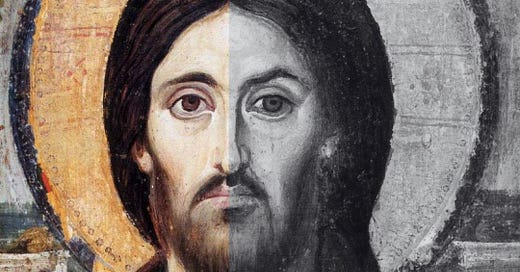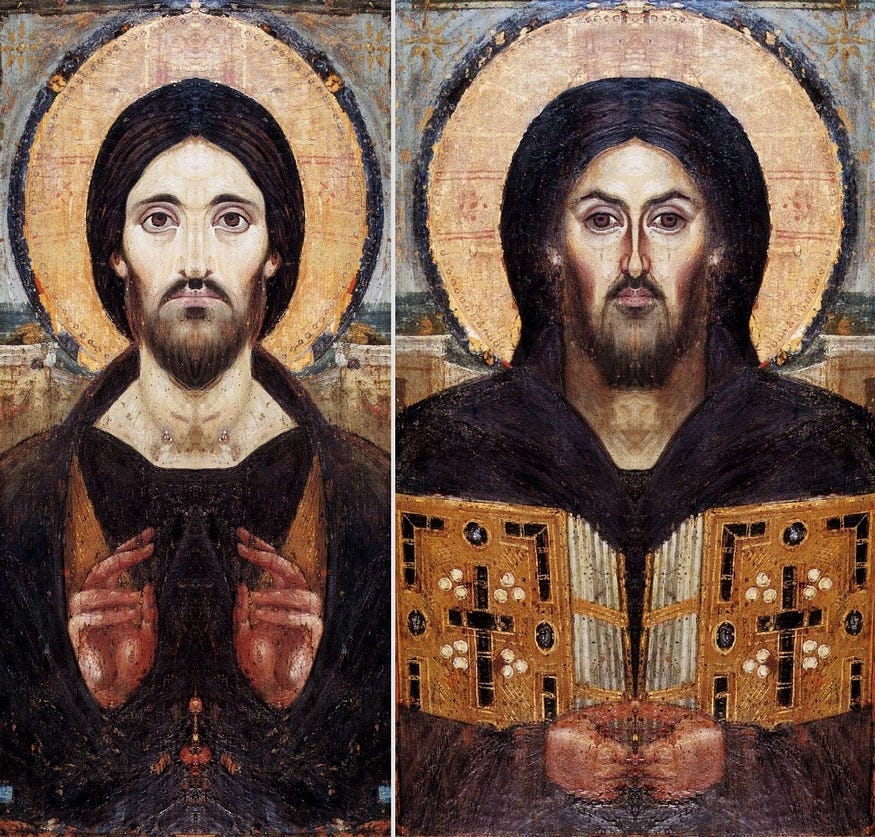The icon of Kristos Pantokrator (Jesus Christ, Ruler of all) is possibly one of the best known icons in Christianity. It dates back to the sixth century AD and is now preserved at the Monastery of St Catherine, in the Sinai Desert.
The icon is rich in spiritual and theological meaning, granting us a glimpse into the Person of Jesus Christ. Throughout the early Church, various heresies called into question either the divinity or humanity of Jesus Christ, denying one at the expense of the other. It was the task of the early Church Councils to repudiate these heresies and articulate the Apostolic Faith according to the testimony of the Gospels.
The Kristos Pantokrator expresses the rich Christology of the Councils of Ephesus (431) and Chalcedon (451) which affirmed the truth of Jesus Christ - a divine Person with two natures: the Son of God and the son of Mary, fully divine and fully human. In theological terms, this is known as the Hypostatic Union, and an appeal to analogy may help understand this profound reality. The union of the divinity and humanity of Jesus Christ is NOT like oil and water in a container, where the former rests on top of the other (the heresy of Nestorianism); rather, it is like the coming together of water and wine, a symbolism that actually becomes a reality in the Liturgy of the Eucharist.
So how does the Kristos Pantokrator portray this deep intuition of the Christian faith? Notice that the icon can be separated into two halves as shown above. The right side represents the divinity of Jesus Christ, symbolised by the Book of the Gospels which attests to the Eternal Word (Logos) who was with God and was God from the beginning (John 1:1). The left side represents the humanity of Jesus Christ, captured by the hand is a posture of blessing directed to all peoples. Transcendence and immanence are both captured here.
The icon becomes even more interesting when these two halves are mirrored to create two separate images (below). Here, the portrayal of Jesus’ humanity and divinity is lucidly distinct. Notice how the face of the human “aspect” is far more lean than the that of the divine, attesting to the reality that Jesus laboured as a Carpenter.
But what does the Kristos Pantokrator mean for us? Recall how in my previous article, I pointed out a fundamental teaching of Vatican II:
Christ, the final Adam, by the revelation of the mystery of the Father and His love, fully reveals man to man himself and makes his supreme calling clear.
Gaudium et Spes, 22
In light of these words, is it not the case that when we peer into the depths of this icon, we are also peering into the reality of who we are as human persons, made in the image of God? Is it not the case that while we share the fullness of Jesus’ humanity by nature, we are also called to share in the fullness of His divinity by the sheer gift of His grace? The unique claim of Christian anthropology is that our humanity can only be understood in light of the “supreme calling” God has inscribed in our hearts to become His adopted children in Jesus Christ.






